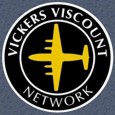
December 1957 to June 1964
Trans-Canada Air Lines (TCA)
CF-THM - c/n 273 - a V.757 series Viscount
Canada registered
September 1955
An order was placed by Trans-Canada Air Lines (TCA) for a third batch of eleven Type 757 aircraft as a follow on from the previous Type 724 and Type 757 orders.
This was the fifteenth one built.
The total order for Type 757 aircraft reached thirty six in May 1957.
Production Order No. F15/757. Sales Order No. F15/76B. Stock Order No……...
8 December 1957
First flight from Hurn Airport, Bournemouth, Hampshire, England.
It was fitted with Rolls-Royce Dart RDa3 Mark 506 engines.
18 December 1957
Aircraft passed off by TCA inspectors as completed and ready for delivery at 20:15 local time.
It was painted in the later 'white top' livery.
It then departed from Hurn Airport, Bournemouth, Hampshire, England on delivery to Trans-Canada Air Lines (TCA) with fleet number '631'.
It was flown by Captain Mcnamara with an unknown co-pilot.
After refuelling at Prestwick Airport, Ayrshire, Scotland it then flew on to Keflavik Airport, Iceland (743 nautical miles) where it was refuelled before continuing on to Bluie West 8 (BW8) Airfield, Sondre Stromfjord, Western Greenland (804 nautical miles) where it stopped overnight.
BW8 was built during WWII to assist the transfer of military aircraft from North America to Europe and was opened in October 1941.
23 December 1957
Departed from Bluie West 8 (BW-8) Airfield, Kangerlussuaq, Sondre Stromfjord, Western Greenland to Goose Bay Airport, Newfoundland & Labrador, Canada (872 nautical miles), Dorval International Airport, Montreal, Province of Quebec, Canada (810 nautical miles).
The cabin seating was installed in Canada, as the seats used by TCA were of American manufacture.
The cabin was fitted out with 44 seats which was a reduction from the original 48 seat specification and provided more leg room.
This was heavily marketed and resulted in a high load factor compared to the 18 seat Douglas DC-3 that it replaced on some routes.
31 August 1960
Total time 7,063 hours and 6,230 total landings.
12 June 1961
Damaged during an aborted landing and subsequent emergency landing at Dorval International Airport, Montreal, Province of Quebec, Canada.
During a training flight on approach to runway 24L at 14:50 Eastern Standard Time (EST) the No.3 starboard inner engine was feathered and power was reduced to flight idle on the No.4 starboard outer engine to simulate an engine failure. As the aircraft flared for landing the training captain, James H Thomson suddenly realised that the undercarriage had not been lowered but before any action could be taken the No.2 port inner propeller struck the runway. He took over command and increased the throttles to full power and attempted to climb with the No.3 engine still in the feathered condition. There was a heavy vibration coming from the damaged No.2 engine and propeller which was shut down and feathered.
An emergency was declared and the control tower advised the crew that they could use any suitable runway. As the aircraft was climbing very slowly on two engines the crew elected to turn and land on runway 06L.
During the turn, which was carried out using the rudder only and approach an attempt was made to unfeather the No.2 and No.3 engines in case they were needed for an overshoot but without success. The undercarriage was lowered but appeared not to be locked by the lack of green lights in the cockpit. As the aircraft landed the undercarriage collapsed and the aircraft slid along the runway damaging the flaps, propeller and shockloading all four Dart engines.
The subsequent inquiry criticised the crew, especially the training captain for not carrying out the standard pre-landing checks.
Repaired including replacement Dart engines and returned to service.
1 June 1964
Transferred to Air Canada due to a corporate name change.
|



